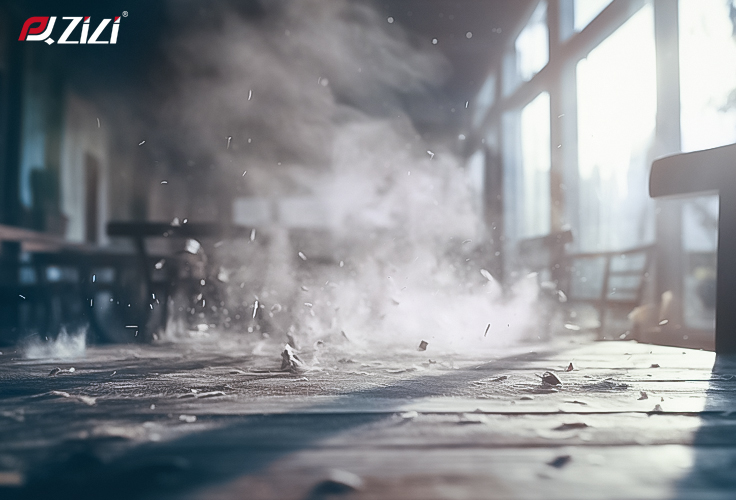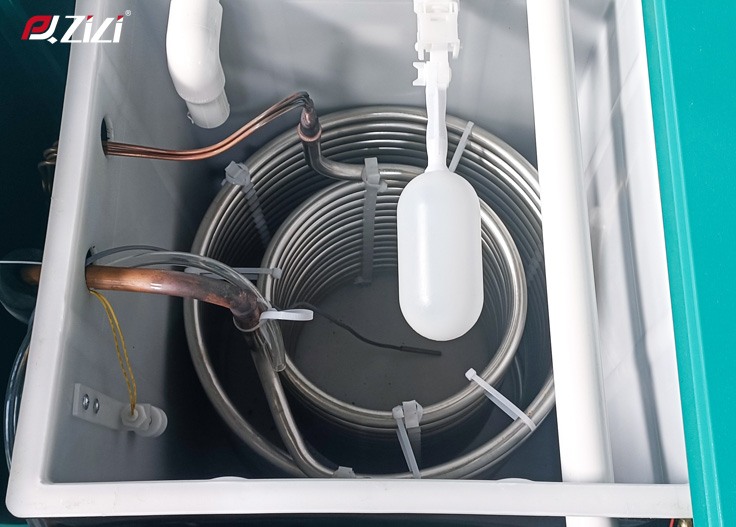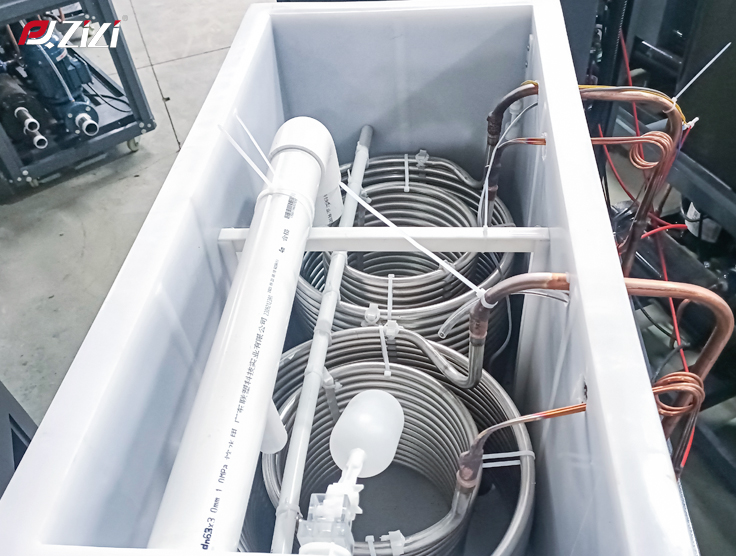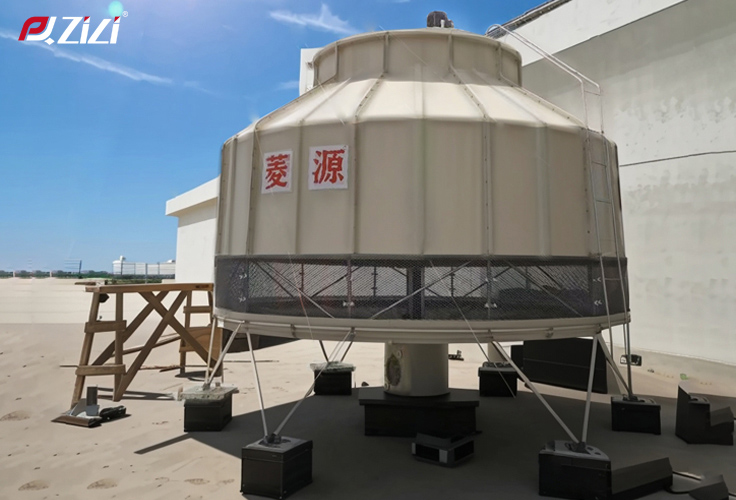Pengqiang industrial chiller is an equipment that used to reduce the temperature of industrial equipment in Injection molding industry. In the use of industrial water chiller, some improper operation may lead to the inlet and outlet water has a temperature difference. It refers to the temperature difference between the inlet and outlet water of the chiller. This difference may be caused by a variety of factors, including the system load, the ambient temperature and cooling water flow rate.

So what will cause the temperature difference between water in and water out for a water chiller?
System load changes: If the heat load of the industrial process changes, the chiller may need to adjust its cooling capacity. This change will lead to an increase in the temperature difference between inlet and outlet water.
Cooling water temperature fluctuations: industrial chiller usually uses cooling water to dissipate heat. If the temperature of cooling water fluctuates, such as affected by changes in ambient temperature, then the inlet and outlet water temperature difference of the chiller may also change.
Cooling water flow rate change: When the flow rate of cooling water changes, the cooling effect will also be affected. The lower flow rate may cause the temperature of the water outlet rising, that increasing the temperature difference between the inlet and outlet water.

Improper system design: the unreasonable system design, pipeline layout or component selection of some products may lead to the uneven flow of cooling water in the machine, which leads to the appearance of the temperature difference between the inlet and outlet water. The industrial chiller designed by Pengqiang has fundamentally eliminated such problems.
Water Chiller operation problems: the fault of the chiller itself or poor operating conditions may lead to changes in the temperature difference between the inlet and outlet water. For example, problems with the compressor, expansion valve, or condenser can all have an impact on the temperature difference.
Too low cooling water temperature: If the cooling water temperature is too low, it may cause the outlet water temperature of the chiller to drop, thereby increasing the temperature difference between the inlet and outlet water.
Harsh environmental conditions: If the industrial chiller is installed in harsh environmental conditions, such as high temperature environment or lack of good ventilation, it may lead to poor cooling effect, which affects the temperature difference between the inlet and outlet water.
If there is a large temperature difference between the water in and out of the industrial chiller, it may lead to the following situations:
Reduced efficiency: The increase in temperature difference usually leads to a decrease in the working efficiency of the chiller. This is because the cooling effect is directly related to the temperature difference, and a larger temperature difference may indicate that the cooling effect is poor, and more energy is needed to achieve the desired cooling effect.
System instability: Excessive temperature difference may lead to instability of the chiller system, making it difficult to maintain constant working conditions. This can lead to temperature fluctuations, affecting industrial processes that need to maintain a stable temperature.

Shorten equipment service life: During long-term operation, excessive temperature difference may generate additional thermal stress on key components of the chiller, such as compressors, condensers, etc., thereby shortening the life of the equipment.
Increase energy consumption: In order to keep the system stable in response to the increased temperature difference, the chiller may require more energy to maintain the desired cooling effect, which will result in an increase in energy consumption.
If the temperature difference between the inlet and outlet water of the chiller is too large, then in order to effectively operate the industrial chiller and reduce the temperature difference, our company recommends taking the following measures:
Optimize system design: Ensure that the chiller matches with other system components, and consider the needs of industrial processes to optimize system design.
Regular maintenance: Check and maintain the chiller regularly to ensure the normal operation of all components of the system and to prevent abnormal temperature differences caused by equipment faults.

Use the right cooling water: Ensure that the quality and flow rate of the cooling water are appropriate to the requirements to maintain a stable temperature.
Temperature control: Use the appropriate temperature control system to ensure that the chiller can maintain stable operation under different loads and environmental conditions.